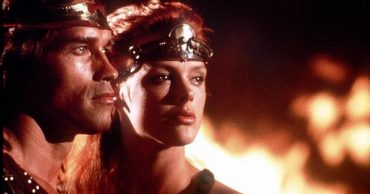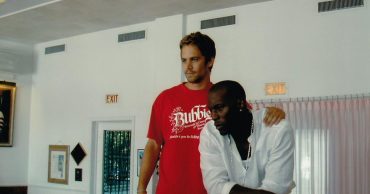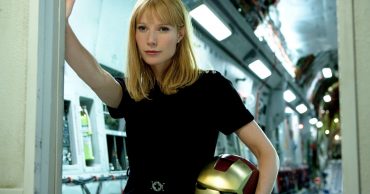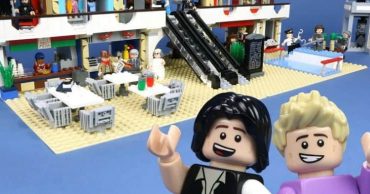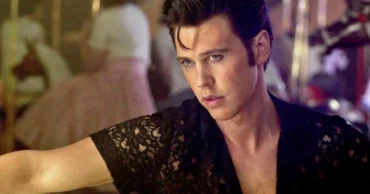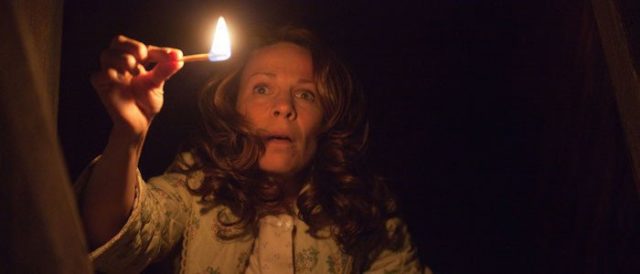
You may be asking what is the jump scare? It happens when you’re watching a horror movie and you know that it’s coming…something is going to jump out or make a terrible noise that will scare you so badly that you jump out of your seat. Some props to watch for are beds, closets, mirrors, creepy paintings or dark hallways. Some of the best filmmakers know how to use mood, tone and environment to set the stage for scenes that stick with you for years to come. Here are some examples from modern horror movies.
“Annabelle: Creation”
This film is packed with its share of jump scares. It’s doing well at the box office and its proof that we will actually pay money to get the pants scared off of us.
Silent fright
We can even go back to the 1930s and find the silent scare. The older version of “The Phantom of the Opera” scene where Christine took the mask off of the Phantom, the response from the audience was one of terror with people screaming and fainting in the audience.
The evolution of the jump scare
In 1942, “Cat People” moved the jump scare forward a few steps. The sets were lavish and the monsters were really scary. The filmmakers used mood in addition to set the audience up for the jump scare. As Alice is beign chased by a cat-person, the darkness makes it hard to see what’s going on. This builds the suspense. All they heard was footsteps. As she peers over her shoulder and begins running, the fear intensifies. When the bulls pulls up and makes a loud sound, the intensity climaxes and people scream and jump in response to the pent up anxiety over what is coming. This was a great technique that was named the “Lewton Bus after its creator producer Val Lewton.
Progress slowed for a few years
We had to wait for a few decades to see more of the jump scare techniques develop. We cannot deny the brilliance of Alfred Hitchcock in his masterpiece horror film “Psycho.” In typical Hitchcock form, the audience is misled and he uses camera angles expertly. We’re all holding our breath as Arbogast enters the Bates home in search of Norman’s mother. The camera focuses on him and suddenly we realize that as a door begins to open slowly, danger is afoot, but we cannot tell from where.
The camera shifts our focus to one side of the frame when he ascends the stairs. As Norman emerges, the soundtrack works it’s magic as he enters from a door placed just to the right. This wasn’t a trick and we are dealt with full shocking blow as Arbogast gets slashed. Hitchcock builds the suspense and lets us down so we really don’t know when or from where it is coming. “Psycho” set off a domino effect for the horror film industry and they all wanted in on one form or another of the jump scare.
More jump scare cues
The historical progression of jump scares took on a few more props. How many times have we seen something really bad happen at the medicine cabinet? It’s usually when the person looks away for a moment and then glances back. What stands behind them makes us jump in terror. Now we instinctively tense all of our muscles when we see them open the cabinet door. It might take a few minutes of trickery, but we know it’s eventually coming. The audience is thoroughly prepped prior to the screaming.
Are they really dead?
Now we jump ahead to the movie “Carrie.” Just when you think that the horror is over with and you can get back to feeling normal, you’re going to see her bloody hand jut out of the grave, seizing the last survivor from the massacre at her school. We see this scenario played out in quite a few horror films. It’s never really over because in some type of twist, they are resurrected for a sequel.
Enter the slasher
“Psycho” was a fair introduction to the slasher but it was only a forerunner of things to come. We move to the 1980s and remember John Carpenter’s contribution. There’s nothing like a combination of jump scare techniques, just before someone gets their throat slit. They hide when they should run. They run when they should hide, and sometimes they just cry and beg when there’s still room to get the hell out of there.
They even tamper with your dreams
Consider “An American Werewolf in London” and the “dream within a dream.” Jump another few feet for the same trend in “A Nightmare on Elm Street” and it’s gonna be hard to go to sleep at night. What’s coming when I get to the REM stage? We can’t forget about the evil spirits that pull the covers off of us at night and sling us from wall to wall, while simultaneously upending all of the crosses we’ve placed on the walls to ward them off. The use of multiple jump scare tactics, particularly those that make us let our guard down is alive and well. They’re perfecting the craft and leaving us feeling a little scared to drive home at night after the movie. It’s come down to taking a van full of people along or seeing a matinee in the daylight.
Thanks to /film for getting us started on this
 Follow Us
Follow Us
